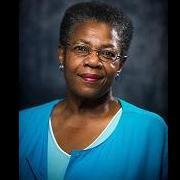-
Posts
2,381 -
Joined
-
Last visited
-
Days Won
90
richardmurray's Achievements
Single Status Update
See all updates by richardmurray
-

Source: New York Daily News / Getty
OP-ED: Why Is Rikers Island Still Open And Why Won’t NYC Mayor Eric Adams Accept The Help He Needs?
Adams continues to oppose bail reform and asks lawmakers to pass more restrictive laws that would increase Rikers' already sky-high population, as well as appoint more “tough on crime” judges.
Written By Olayemi Olurin
Rikers Island is out of control and New York City Mayor Eric Adams‘ actions suggest he would like it to remain that way.
Rikers is New York City’s infamous pre-trial detention center where Black and brown New Yorkers have been terrorized since 1932. A lesser-known fact is that the people held there have not been convicted of a crime, they many times simply do not have the money to purchase their freedom and fight their case from the outside.
New York City is one of the largest and most diverse cities in the world. There are almost 9 million people crammed into this little city, over 41% of whom are white. Yet over 90% of the people held at Rikers are Black or brown.
In 2019, the Campaign to Close Rikers emerged and advocates introduced a plan to shut it by reducing the jail’s population to 3,300 and closing the additional run-down city jails committing the same abuses against the people within it. A third measure would divert the $1.8 billion that would be saved annually by lowering the population to 3,300 into housing, healthcare, education, economic development and youth services in poor communities.
Adams promised that if elected, he would support former Mayor Bill de Blasio’s plan to close the jail altogether and to create “systemic change.” Adams has now expressed skepticism about the plan to close Rikers by 2027.
His argument is that too many people are incarcerated at Rikers for them to close the jail by then … because where would we put all these people who haven’t been convicted of a crime while they await their trial. I imagine we could put them in the same place we put rich people accused of crimes—their homes—but let’s explore his argument.
Built to only hold 3,000 people, Rikers contains approximately 5,500 people. The packed cells and worsening deaths, abuse, violence and illness are also evidence of how cash bail has been weaponized against the poor to deprive them of their rights.
New York City’s landmark bail reform addressed this issue by eliminating cash bail for most misdemeanors, low-level offenses and nonviolent crimes. In turn, Rikers’ population was drastically reduced, a necessary step to closing the jail.
According to the New York City Comptroller’s office < https://comptroller.nyc.gov/newsroom/nyc-comptrollers-office-analysis-finds-bail-continues-to-drive-pretrial-detention-despite-reforms/ > , there was been essentially no change in the monthly percentage of people rearrested while released pending trial after bail reform. And yet, unfounded fearmongering by people like Adams brought about rollbacks that rose the population about 7 to 11%.
Adams continues to oppose bail reform and asks lawmakers to pass more restrictive laws that would increase Rikers’ already sky-high population, as well as appoint more “tough on crime” judges.
That is not the conduct of someone who has any interest in lowering the jail’s population to facilitate its closing, despite acknowledging it is already thousands of people too high and has caused deaths, violence, suicide and rampant abuse. He’s also fighting off calls for a receivership.
For the last six years, federal judge Laura T. Swain has tried and repeatedly failed to muscle New York City into getting Rikers under control. She even appointed a monitor for the prisons. Still, the city has demonstrably failed to comply with every mandate and deaths continue to mount. Advocates have asked the court to place Rikers under receivership.
A receivership would allow the court to appoint a non-partisan expert who is given wide latitude to address the crisis and be answerable only to the court, and not state and local laws and bureaucratic agencies, allowing them to make progress in ways the city personnel could not. Once brought up to constitutional standards, the control of Rikers would then return to the state and locality.
Under Eric Adams’ leadership, Rikers already has 15 deaths — just one death shy of 2021’s 16-person death toll, which was the highest death toll since 2013. People continue to be held in solitary confinement conditions despite a law outlawing it, which Adams dismisses as “restrictive housing,” and the level of depraved indifference on the part of the Department of Corrections has reached unprecedented heights.
Most recently, video footage emerged of three corrections officers standing and watching Michael Nieves, a man incarcerated in Rikers’ mental health unit, bleed to death for 10 minutes after slitting his throat with a razor blade he’d been given. Last week, a corrections officer placed Kevin Bryan inside of a staff bathroom where he hanged himself from a pipe.
In March, Herman Diaz choked to death on an orange while other incarcerated people unsuccessfully begged officers to intervene. Three months later, Antonio Bradley hanged himself inside a holding cell, But Adams chose not to inform the U.S. Department of Justice of the in-custody death, preventing the federal government from sending someone down to launch an investigation until much later.
“I don’t see that as a coverup or a violation of any rule,” Adams said, responding to allegations of a cover-up. “If it is, we will definitely correct it. But my understanding is that a place of death is where they died.”
You cannot simultaneously recognize that a jail is so out of control that it needs to be closed entirely and still insist that you’re capable of managing it. Yet, that’s the exact message Adams continues to push to New Yorkers.
The systemic change Adams promised must’ve been radical with depraved indifference to human life because not only have conditions at Rikers persisted, they’ve worsened. It’s time for Rikers to be placed under receivership.
Olayemi Olurin is a public defender, movement lawyer and political commentator in New York City.
ARTICLE
https://newsone.com/4417432/why-is-rikers-island-still-open/
MY THOUGHTS
I want to first quote Olayemi
Over 30 people have died in Rikers since last year. Rikers was only built to hold 3000 ppl so why are are over 5000 people who haven’t been convicted of a crime being held there despite Rikers being declared a human rights crisis?
I said in reply to her
I read the article on @newsone from @msolurin the statistical support she uses is verified beyond her and beyond satisfactory to her position on Eric Adams and Rikers relationship to NYC
...
When Eric Adams campaigned for mayor he had one platform, one issue that gave way to no other. NYC is unsafe. The problem with that platform in a global city is the size of the city will always provide instances or moments, regardless of their statistic uncommonality(1/5) , that can be used to suggest a lack of safety regardless of the truth. Sequentially, once mayor, Eric Adams has in NYC's media a constant highlighter of instances. He has in NYC's population, a constant source of instances. He has in each of NYC's (2/5)various communities: black/white/christian/muslim/young/old or other constant support by some people who always view NYC as at the precipice of being swallowed by crime. Thus, even though you prove your position (3/5)through statistics others gathered honestly and your position shows a truth that is not contestable with common sense, the support for Adams position in NYC is too large for him to ever be swayed to change. (4/5)The only way Rikers or the legal system en large in NYC will be influenced more positively from the mayors office at this point will be a new mayor.(5/5)
In conclusion
Olayemi's position is correct. But the problem is undoing it is more than merely policy. The populace in NYC has two group of people in NYC, both multiracial in composition, that give any elected official on a "keep nyc safe" platform solid support. The first is people who have a heritage of positioning NYC's biggest issue as crime. Various religious groups, community groups, primary purpose is the lessening of crime in NYC, even if the statistics show crime is lessening or crime is not as potent, said organization's goal is zero crime, which in a fiscal capitalistic city with more than one million is impossible, let alone ten million. The second is the financial profiteers to the industry of prisons in NYC. The NYPD profits with bigger salaries, which helps their larger union coiffeurs, or better facilities, let alone the various money the nypd gets in concert with illegal activity that is fueled with a large prison populace. The Real Estate industry profits cause their goal is a city of wealthy people, that is the goal for the real estate industry in NYC. But to achieve that, the city also needs poor people for various small labors that machines can't do. But, to be fair to the poor you have to lower the rent. If you keep the rent high, the poor in desperation will commit crimes. The legal system of the city acquires millions in bail money side other fees for the processing of the penal system. The various charity organizations that benefit from money sent to them with the size of the prison populace as a convincer to fiscally wealthy people who want to prove their goodness. Many profit off of the prison system in New York City. White/Black/Young/Old many and many other people have no desire to get rid of rikers cause the profit from it. And regardless of how they feel about Eric Adams, whether they like him or not, they will support their fiscal benefit. Eric Adams comprehended this when he initially campaigned for mayor and he knows the fiscal have's in the city are in majority supportive and the fiscal have not's , even if in majority opposed, can be ignored for the lack of a candidate who will have a platform based on what people like Olayemi suggest.
To read more of my prose to socio-politics consider my pulpit, click the highlighted links below.
The Right To Bear Arms Link
The series: Link
Support article
NYC Comptroller’s Office Analysis Finds Bail Continues to Drive Pretrial Detention, Despite Reforms
March 22, 2022
Data Shows No Change in Share of People Rearrested While Awaiting Trial in the Community, Even As Reforms Reduced the Number of People Subject to Bail.
Comptroller Lander Calls for Albany to Reject Rollbacks and Instead Strengthen Implementation.
New York, NY – Despite reforms that have meaningfully reduced the number of people subject to bail, bail-setting continues to drive pretrial detention and syphons money from low-income communities of color, according to a new analysis from the NYC Comptroller’s office. The share of people released pretrial who are rearrested for a new offense has not changed following the implementation of bail reforms.
While judges set bail in 14,545 cases in calendar year 2021, down from 24,657 in 2019, defendants and their friends and family still posted $268 million in bail, up from $186 million in 2020. The data on the impacts of the 2019 bail reforms shows that, despite new requirements to consider the ability of defendants to pay in those cases where bail still applies, a full two years into implementation, the 2019 reforms have neither made bail more affordable nor prevented incarceration for those still subject to bail setting.
Even as the number of people subject to bail has declined, there has been no increase in the number or percentage of people who are rearrested for a new offense while awaiting trial in the community. In January 2019, 95% of people awaiting trial in the community were not rearrested that month, while that proportion rose slightly to 96% in December 2021. Both before and after bail reform, fewer than 1% of people released pretrial, either through bail or otherwise, were rearrested on a violent felony charge each month.
Rather than roll back critical reforms, the Comptroller’s office urged Albany legislators to strengthen implementation and invest in programs that prevent crime and promote community safety.
“In a moment of real anxiety about public safety, the conversation on bail reform has become divorced from the data, which shows essentially no change in the share of people rearrested while released pretrial before and after the implementation of the 2019 bail reforms,” said Comptroller Brad Lander. “Instead, what we see is a rise in average bail amounts and a continuation of bail-setting practices that extract money from families and deny freedom to people who are presumed innocent before trial. We should follow the facts rather than fear, and reject reactive efforts to roll back reforms that threaten the progress we have made towards more equal justice. Our system has put a high price on freedom and made bail a barrier to justice for those who cannot afford to pay.”
The Office of the New York City Comptroller analyzed data provided by the New York State Office of Court Administration on bail setting and bail made, as well as data on pretrial release outcomes from the New York City Criminal Justice Agency during calendar years 2019, 2020 and 2021 to assess the actual impacts of the 2019 bail reforms and the 2020 rollbacks.Key findings included:
- Since state bail reforms took effect, the number of people subject to bail has significantly declined but bail-setting still drives pretrial incarceration. In calendar year 2021, judges set bail in 14,545 cases, down significantly from 24,657 in 2019. Over 2020 and 2021, roughly half of defendants who had bail set were able to eventually make bail, although most defendants are incarcerated for at least some amount of time before doing so.
- The cost of bail increased. Bail reforms that took effect January 1, 2020 included new requirements for judges to consider a person’s ability to pay when setting bail. Yet average bail amounts rose, rather than fell in 2021, and people continue to be unable to afford the price of their freedom. In 2021, the average cash bail amount set at arraignment was $38,866, double the $19,162 average in 2019. While increases in average bail amounts likely stem from broad restrictions on setting bail for lower-level charges, bail law explicitly requires judges to consider the defendant’s financial circumstances.
- Commercial bonds that require high, non-refundable fees to private companies continue to be widely used. Of bonds posted in 2020 in New York City Supreme Court – the City’s trial court for felony cases – 57% of cases used commercial bonds. In 2021, defendants and their friends and family posted a total of $226 million in bonds, including commercial bail and partially secured bonds, up from $159 million in 2020 but down 3% from $233 million in 2019.
- Less onerous and punitive bail options, such as partially secured or unsecured bonds, were used less often than commercial bonds. Partially secured bonds accounted for 20% of bail postings in Supreme Court during 2020, and judges used the least onerous mechanism, unsecured bonds that require no money upfront, only seven times in 2020, down from 24 times in 2019. The average dollar amount of partially secured bonds posted in Supreme Court jumped substantially, rising from an average of roughly $11,900 from January through November 2019 to an average of more than $40,000 in 2020.
- There has been essentially no change in the monthly percentage of people rearrested while released pending trial after bail reform. In January 2019, 95 percent of the roughly 57,000 people awaiting trial were not rearrested that month. In January 2020, 96 percent of the roughly 45,000 people with a pending case were not rearrested. In December 2021, 96 percent were not rearrested — and 99 percent of people, regardless of bail or other pretrial conditions, were not rearrested on a violent felony charge.
The Comptroller’s Office recommends that the New York State Office of Court Administration (OCA) provide guidance and clear instructions to judges on how to assess a defendant’s ability to pay and mandate trainings on this provision of the law. OCA should direct judges to first consider an unsecured bond and justify on the record their reasons for not using that option before setting a partially secured bond.
To significantly curtail the use of pretrial detention, New York should also advance strategies that address root causes of criminal legal system involvement, redirecting resources from the law enforcement and correctional systems to social supports that promote stability and safety and create economic opportunity, such as mental health care, substance use prevention and treatment, affordable housing, youth programming, and quality education.
The full analysis report can be viewed here. < https://comptroller.nyc.gov/reports/nyc-bail-trends-since-2019/ >-

Rikers and continuing the theme of Black elected officials.
The tragedy of Rikers and Black elected officials in NYC is how clearly dysfunctional to the needs of the Black community Black elected officials in NYC are.
And to be blunt, it relates to Kamala Harris who was the Attorney General of California and...
In this forum, I read so many replies to my post concerning black elected officials in the usa that did one of two things.
1) Supported the lack of acting to the black communities specific betterment in the usa by black elected officials in stating a philosophical goal for the usa, that being an aracial human community, that the usa has never been and doesn't seem to be heading to.
2) Placing upon the Black community in the USA, regardless of other groups in the USA, the goal of having no illegality or crime from members of the Black community in the USA.Why do I say this? not because I have a problem with it. But it explains a huge problem in the Black community in the USA.
The following is of Eric Adams, the article is from Olayemi Olurin
The ARTICLE
https://aalbc.com/tc/profile/6477-richardmurray/?status=2091&type=statusThe issue of Black elected officials needing another quality comes up a trillion times...
The need for an Black party, which again, in USA history never happened. The why I comprehend, but the lack of Black people realizing the problem in it not occuring is what angers me.
https://aalbc.com/tc/topic/9211-the-black-community-in-the-usa-need-an-alternative-to-black-officials-from-the-party-of-andrew-jackson-or-abraham-lincoln/
Black organizations making plans that are disconnected to the Black community in the USA's makeup or internal variances.
https://aalbc.com/tc/topic/9769-thoughts-on-national-black-voters-day/My thoughts on the right to bear arms, the first in my pulpit serieshttps://www.kobo.com/us/en/audiobook/richard-murray-s-pulpit-episode-1
-

the forum post



.thumb.jpg.afc88dfee9cd2927de0c440601caac13.jpg)



.thumb.jpg.ed52910791d00308abb8c218695bec88.jpg)
